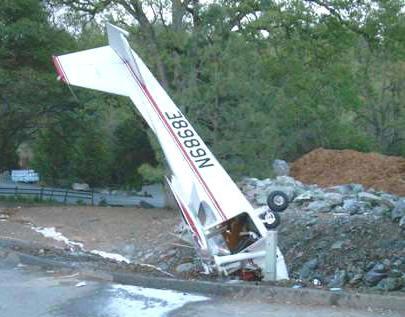 |
|
|
|
|
|
|||
|
By Bill Goldston |
||||
 |
April 9, 2010 - NTSB Chairwomen Deborah Hersman has indicated to the Federal Aviation Administration (FAA) that the agency needs to do a better job in support of search and rescue (SAR) response to aircraft accidents.
In several recent
accidents, information readily available to FAA staff was either not
well communicated or not made available to the Air Force Rescue
Coordination Center (AFRCC) in a timely manner. The Air Force Rescue
Coordination Center (AFRCC) has responsibility for initiation and
coordination of SAR activities in the domestic
When the AFRCC
receives information that a new accident or incident requiring SAR
response has occurred, AFRCC personnel assign it an incident number and
begin to obtain all available information about the flight. |
|||
|
Each significant event or contact during the search is recorded in a
chronological mission log. The AFRCC coordinates the activities of the
searchers and serves as a clearinghouse for information. It continues to
track the mission until the aircraft is located or the search is
suspended pending additional information.
The following accident illustrates some of the problems with
communication between FAA air traffic controllers and AFRCC staff. On
April 26, 2007, about 1430 eastern daylight time, a Piper PA-38-112,
N9247T, crashed into trees and rising mountainous terrain at
The certificated commercial pilot, the sole occupant, eventually died as
a result of the accident, and the airplane sustained substantial damage.
The flight was operated as a personal flight under the provisions of 14
Code of Federal Regulations (CFR) Part 91, and no flight plan was filed.
Instrument meteorological conditions prevailed near the accident site.
The flight originated from |
||||
|
Shortly after the
crash, controllers at the Atlanta Air Route Traffic Control Center (ZTL)
noticed an unidentified stationary radar target about 50 nautical miles
(nm) north of
About 1552, the
ZTL traffic management coordinator (TMC) notified the AFRCC of emergency
locator transmitter (ELT) reports and observation of the 7700 code.
During the call, the TMC stated that there were ?numerous ELT
reports?north of
The AFRCC
controller replied that an incident had been reported south of
At the AFRCC
controller?s request, the TMC provided the information in the ELT
reports, and the call concluded. The AFRCC controller did not provide an
incident number to the TMC, which would have indicated that she
understood that the TMC?s report indicated a new incident. Rather, she
associated the report with the incident south of
Once the report
for the incident south of Atlanta was closed, that also ended any
activity related to the ELT reports and radar observations north of
Atlanta provided by ZTL?s TMC.
Thus, no SAR
effort was begun for N9247T until family members reported the accident
airplane missing the following day. As there was evidence that the pilot
survived the crash, this was a critical SAR failure.
Based on the
family's report of the missing airplane, the
During the search,
the AFRCC activated Civil Air Patrol (CAP) wings in four states,
coordinated information gathering activities with numerous FAA air
traffic control (ATC) and Lockheed flight service facilities, and
obtained radar analysis assistance from CAP and U.S. Air Force (USAF)
air defense personnel. The extensive effort was necessary mainly because
the AFRCC controller did not understand the FAA?s communication about
the existence and location of the 7700 emergency signal being
transmitted by N9247T.
In postaccident
discussions, AFRCC management said that the AFRCC controller who took
the call from the TMC believed that the reports being provided were
related to the existing incident reported south of
The lack of
standard phraseology for communications between FAA and AFRCC personnel
about particular observations, such as the observation of an emergency
7700 transponder code, clearly hindered the SAR effort in this event.
Therefore, to
ensure that incidents reported to the AFRCC are tracked to closure, the
NTSB recommends that the FAA require ATC facilities to enter all AFRCC
contacts on FAA Form 7230-4, ?Daily Record of Facility Operations,? and,
in circumstances where that contact results in the AFRCC assigning a new
incident number to the event, require facilities to contact the AFRCC at
least once per shift for a status update until the AFRCC advises that an
incident has been resolved.
The first priority
following a suspected accident must be to immediately locate the
aircraft and rescue any survivors. The NTSB recognizes that physical SAR
is not an FAA responsibility, but the FAA is frequently the first
organization to become aware that an aircraft is missing, and FAA
facilities normally possess recorded data that could rapidly assist
first responders in locating the accident site. |
| ?AvStop
Online Magazine
Contact
Us
Return To News
|
|
